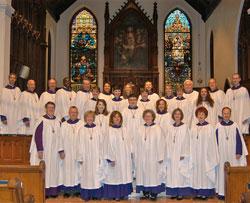
The Cathedral Choir of the Cathedral Church of the Advent in Birmingham, Alabama, will be on a tour of East Coast cities June 12–20.
Beginning in Atlanta at All Saints’ Episcopal Church on June 12 at 7:30 pm, the choir will also sing concerts in Winston-Salem, NC (St. Paul’s Episcopal Church, June 13 at 7:30 pm), Chapel Hill, NC (The Chapel of the Cross Episcopal Church, June 14 at 7:30 pm), and Arlington, VA (St. Mary’s Episcopal Church, June 15 at 7:30 pm).
On June 16 at 5:30 pm they will sing Choral Evensong at the National Cathedral and then leave for New York City, where they will be the visiting choir for the 11 am Choral Eucharist on June 19 at St. Thomas Fifth Avenue. Later that day at 4 pm, they will conclude the tour by singing Choral Evensong at The Cathedral Church of St. John the Divine.
Cathedral choirmaster and director of music Stephen G. Schaeffer will conduct, and music associate Charles M. Kennedy is the organist. Dr. Schaeffer began his duties as director of music and organist at the Cathedral Church of the Advent in 1987, and became Master of the Cathedral Choir in 1997.
The St. Cecilia Fund of the cathedral commissioned composer Craig Phillips to write a Communion Service in G according to the 1662 texts, which the choir will premiere at the Choral Eucharist at St. Thomas Church.

